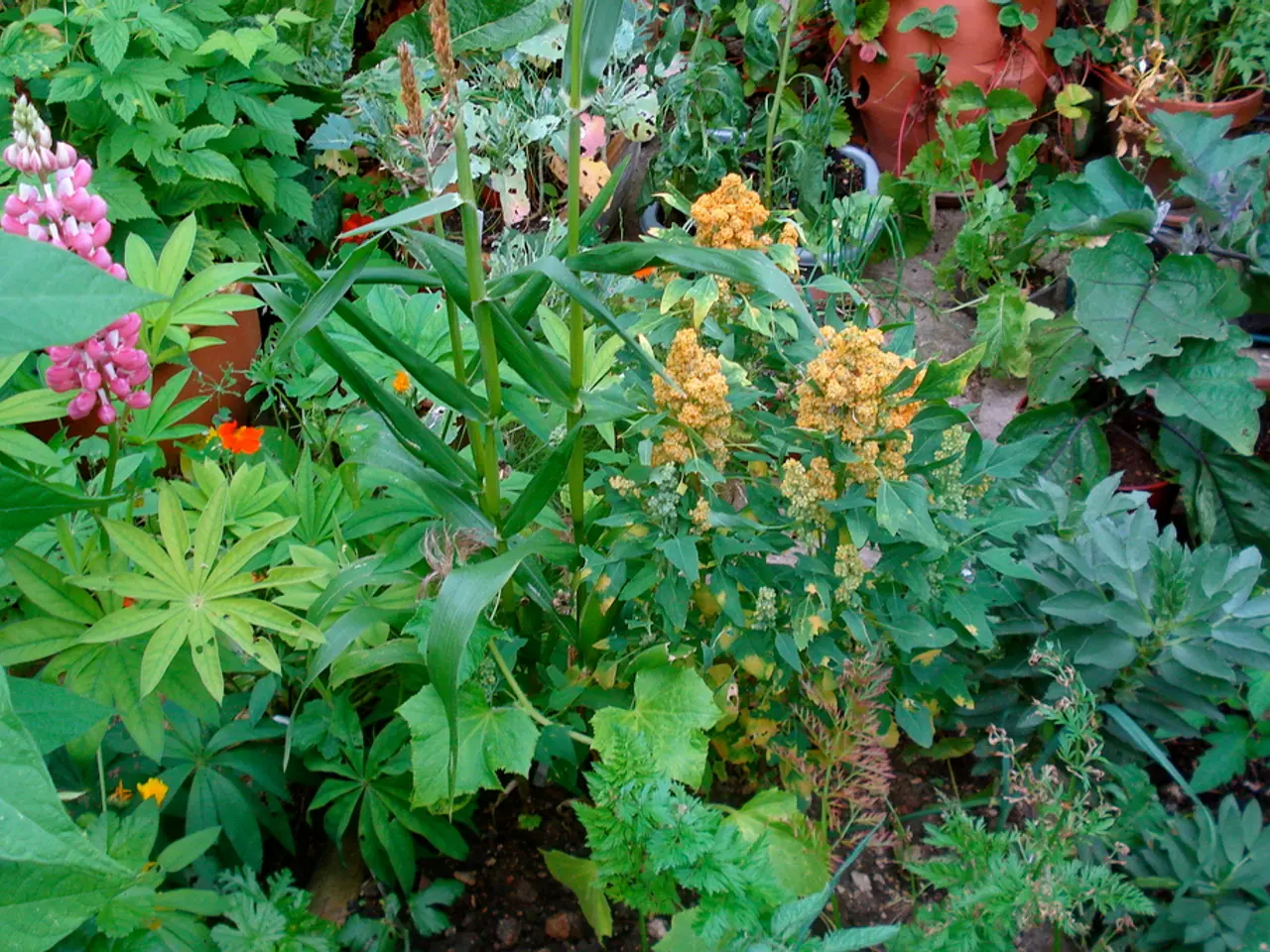Care Instructions and Growth Tips for Calathea Zebrina
The Calathea Zebrina, also known by its botanical name Goeppertia zebrina, is a captivating evergreen perennial that is a popular choice among indoor plant enthusiasts. Known for its striking dark and fluorescent green striped foliage that folds up at night like prayer leaves, this fast-growing plant adds a touch of the tropics to any home.
Light
Bright, indirect sunlight is best for Calathea Zebrina. While it can tolerate medium to low indirect light, it's essential to avoid direct sunlight to prevent leaf scorch.
Water
Keep the soil moist but not soggy. Water when the top 2 inches of soil feel dry. It's recommended to use rainwater, distilled, or filtered water as Calathea plants are sensitive to chemicals in tap water. Bottom watering can help maintain even moisture and reduce the risk of overwatering.
Temperature
Calathea Zebrina thrives in temperatures between 18°C to 24°C (65°F to 75°F). Avoid cold drafts and temperatures below 15°C (59°F) as this plant is not frost tolerant.
Humidity
High humidity of around 60%-70% is optimal for Calathea Zebrina. You can use a humidifier or place the plant on a pebble tray with water to maintain moisture in the air.
Soil
The ideal soil for Calathea Zebrina is moist but well-draining and slightly acidic. A mix designed for tropical plants or houseplants with good drainage is recommended.
Fertilizer
Regular feeding during the growing season (spring and summer) with a balanced, diluted liquid fertilizer is beneficial. Avoid fertilizing in winter when growth slows.
Care Tips
Treat Calathea Zebrina like a forest floor plant—provide dappled light from above, maintain consistent moisture without waterlogging, avoid getting water on leaves to prevent fungus, and consider self-watering pots for convenience.
Propagation
Calathea Zebrina can be propagated with stem cuttings from a parent plant. It can take up to a month for roots to grow.
Potential Pests
Calathea plants are susceptible to aphids, mealybugs, scale, and spider mites. Regularly inspect your Calathea Zebrina for signs of these pests and treat infestations promptly.
Native Origin and Hardiness Zones
Native to Brazil, Calathea Zebrina is hardy in USDA zones 11-12.
Growth and Flowering
Calathea Zebrina can grow up to 3 ft (1 m) tall. Fertilizing Calathea Zebrina may help it flower, a rarity when grown indoors.
Environmental Considerations
Calathea plants do not like sudden temperature changes or drafts. Keep them away from central heat vents, AC, and open doors or windows. Overly wet soils can contribute to root rot, so ensure your soil is well-draining. Low humidity can result in curled and brown leaves, while direct sun will burn the foliage.
By following these care guidelines, you can help your Calathea Zebrina thrive indoors, bringing its unique beauty and tropical charm to your home.
This captivating perennial is not only a popular choice for indoor plant enthusiasts but also an excellent addition to your home-and-garden lifestyle, enhancing your gardening endeavors. Caring for your Calathea Zebrina involves maintaining its preferred lifestyle; a bright, indirect light, high humidity, and well-draining, slightly acidic soil to help it grow optimally and retain its striking, zebra-like foliage.




